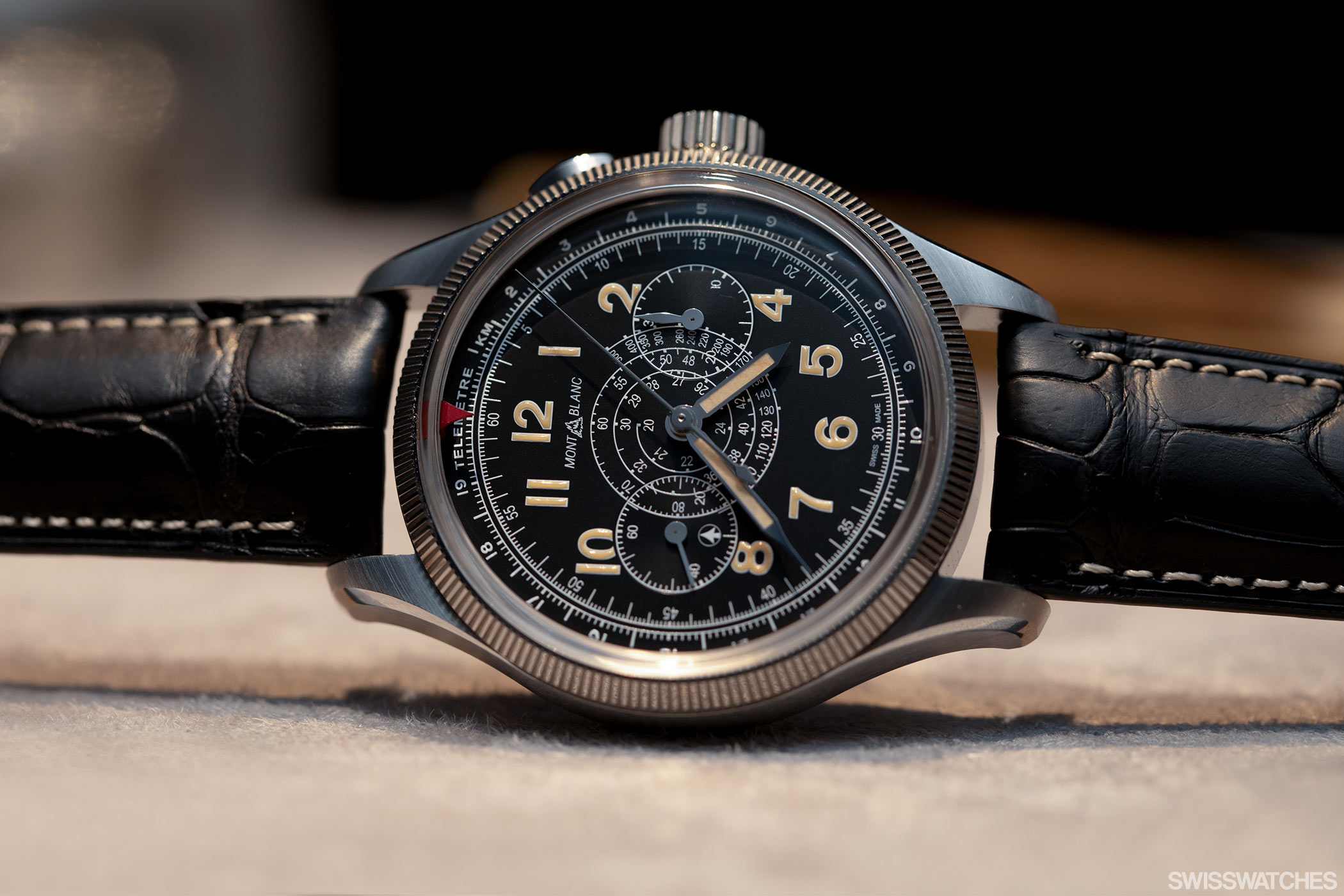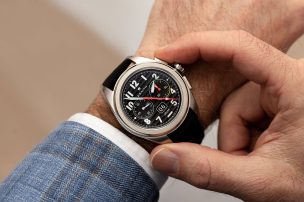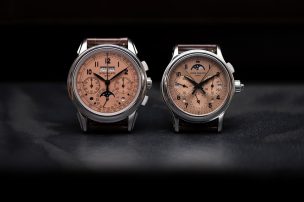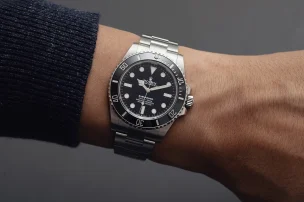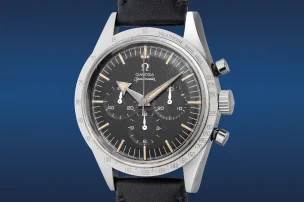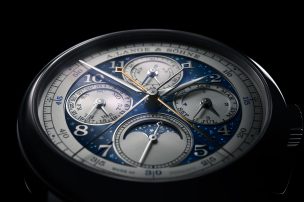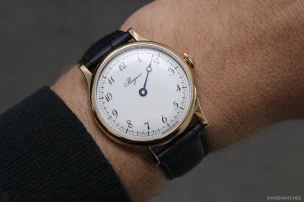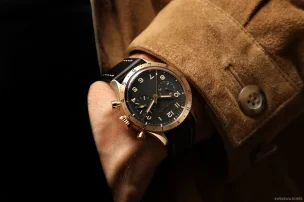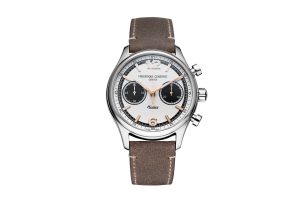
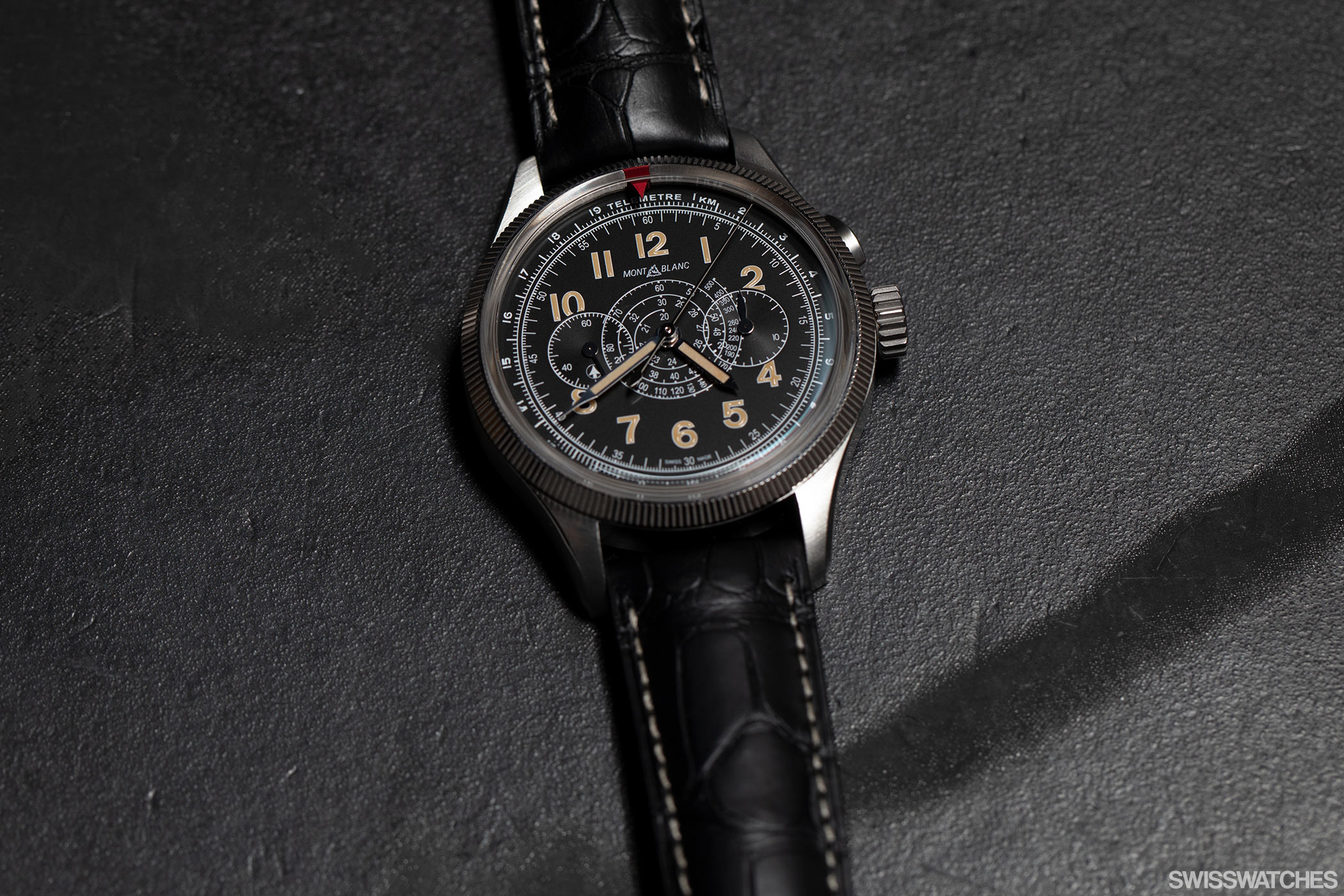
Placing All Bets on Black. But Also on Red – The Montblanc 1858 Minerva Monopusher Chronograph Red Arrow LE88
Montblanc is a brand with a great tradition. So is its Minerva manufacture, the maker of historic and once extremely sought-after monopusher chronographs. Ever since Minerva became part of Montblanc, new monopusher watches have become amongst the most stylistic, defining, and successful models of the house. The latest reference is also very much in line with this tradition; the Montblanc 1858 Minerva Monopusher Chronograph Red Arrow LE88. The novel piece puts all bets on black and red at the same time, making it anything but a watch for fortune hunters.
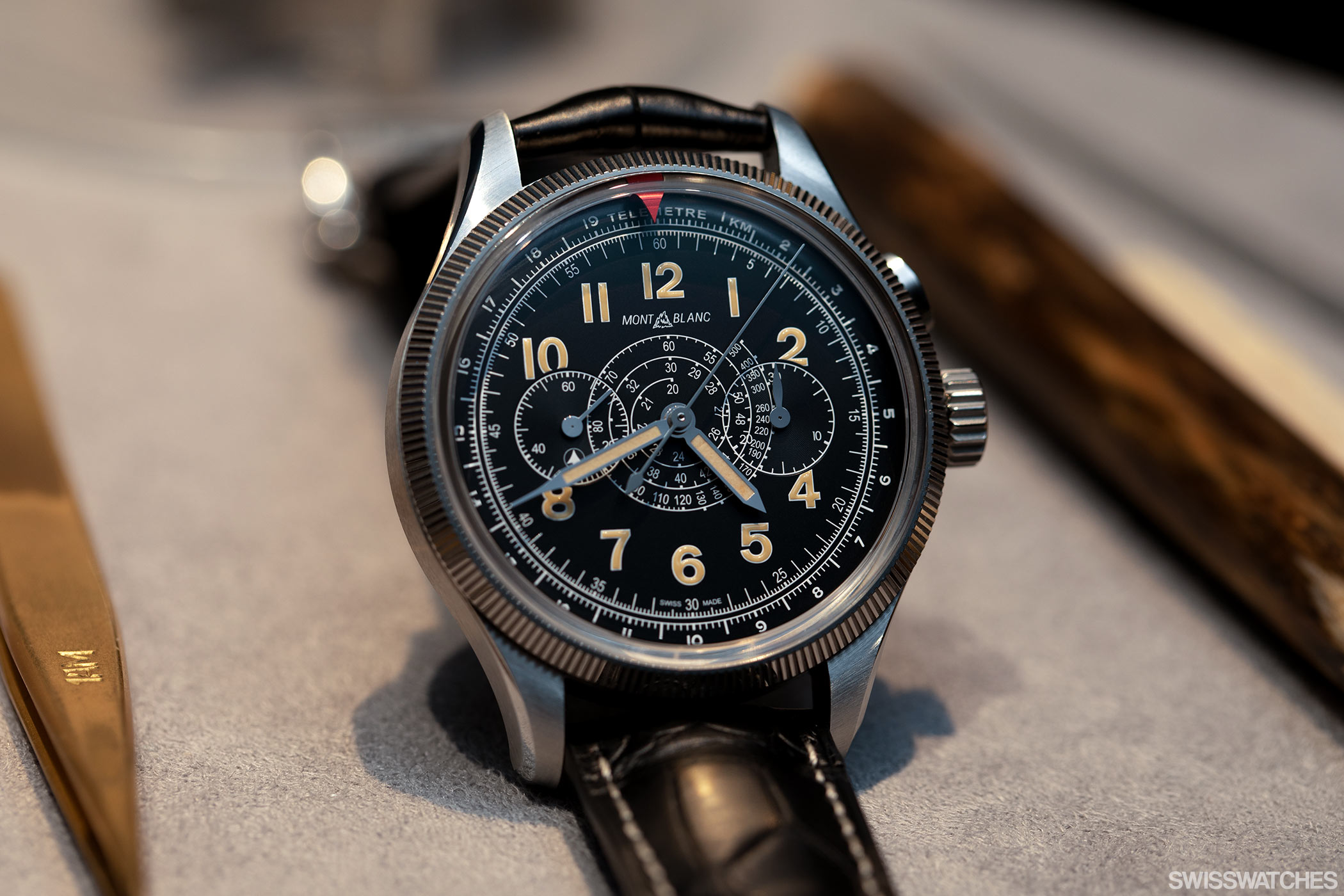
The aesthetic:
A pilot’s watch for the owners of a bespoke suit
The model, which is limited to just 88 pieces, is likely to have an appeal beyond collectors of the brand. It has a classic design at first glance and commits to the watchmaker’s aforementioned traditions, yet to dismiss the watch under the umbrella terms ‘retro’ or ‘vintage’ would not do it justice. Rather, the design makes this watch appear enduringly modern and pleasantly confident in its bearing. Another refreshing decision by Montblanc was to dispense with the on-trend green colour in favour of a black dial combined with a black leather strap. The strap’s contrasting cream-coloured stitching gives the model an appearance that makes it look extremely elegant, yet also cool and casual. As a result, the pilot’s watch suits a bomber jacket just as well as a tailored suit. It’s a watch for officers and gentlemen, so to speak.
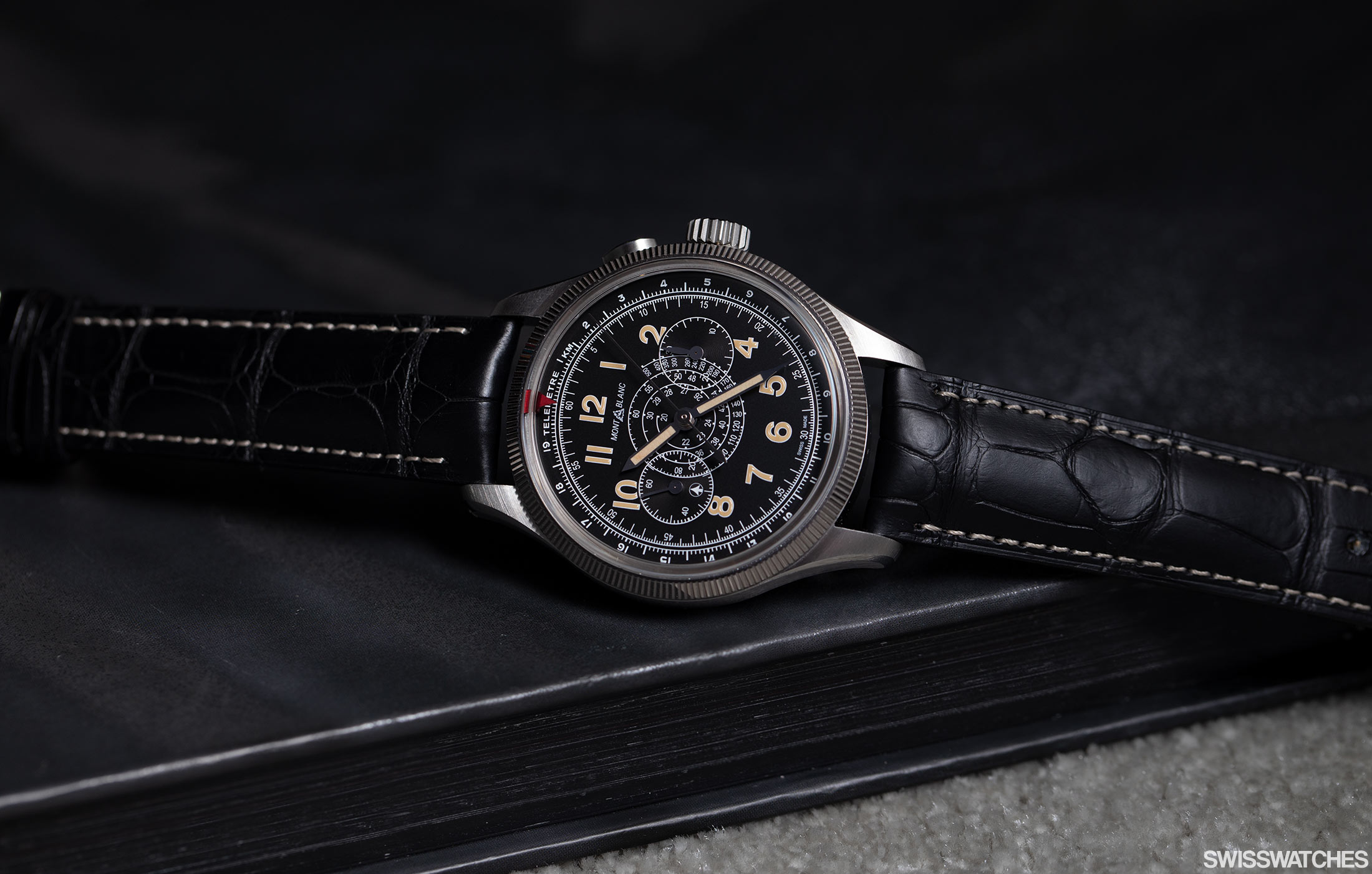
The inspiration:
Minerva’s models for fighter pilots & gentlemen
The inspiration for the 1858 Minerva Monopusher Chronograph Red Arrow LE88 stems from a Minerva chronograph created back in 1939. In the years before then, the manufacture had developed into one of the leading manufacturers for pilot’s watches, as Minerva constructed watches fit for the cockpit, as well as for smart officers donning their dashing uniform.
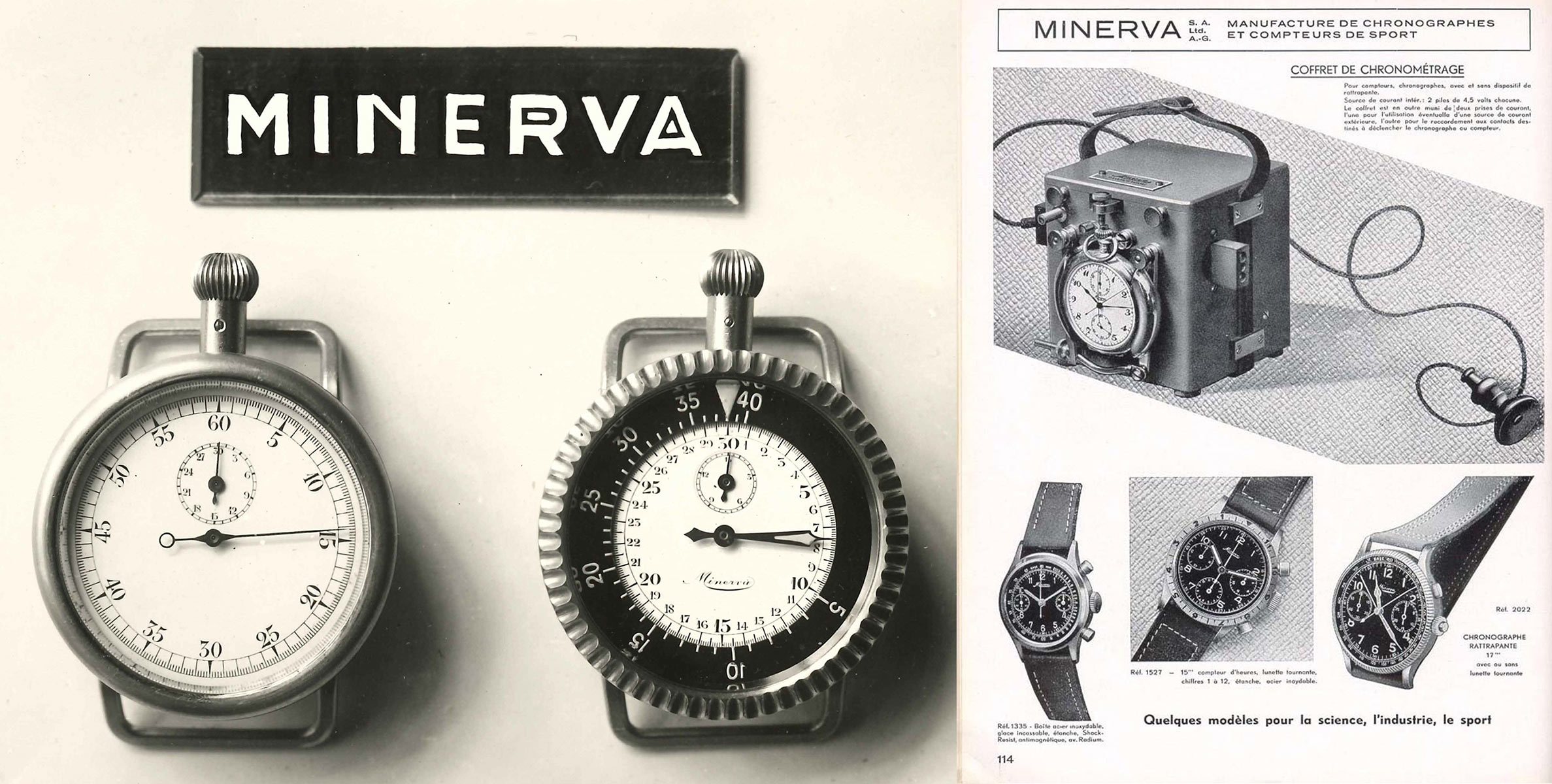
Reliable timepieces were of the utmost importance for military pilots during that time. The most important factors included readability and the ability to operate the watch with ease. Principally, the chronograph and countdown functions needed to be easy to use even with gloves. To facilitate the latter, manufacturers like Minerva incorporated fluted bezels.
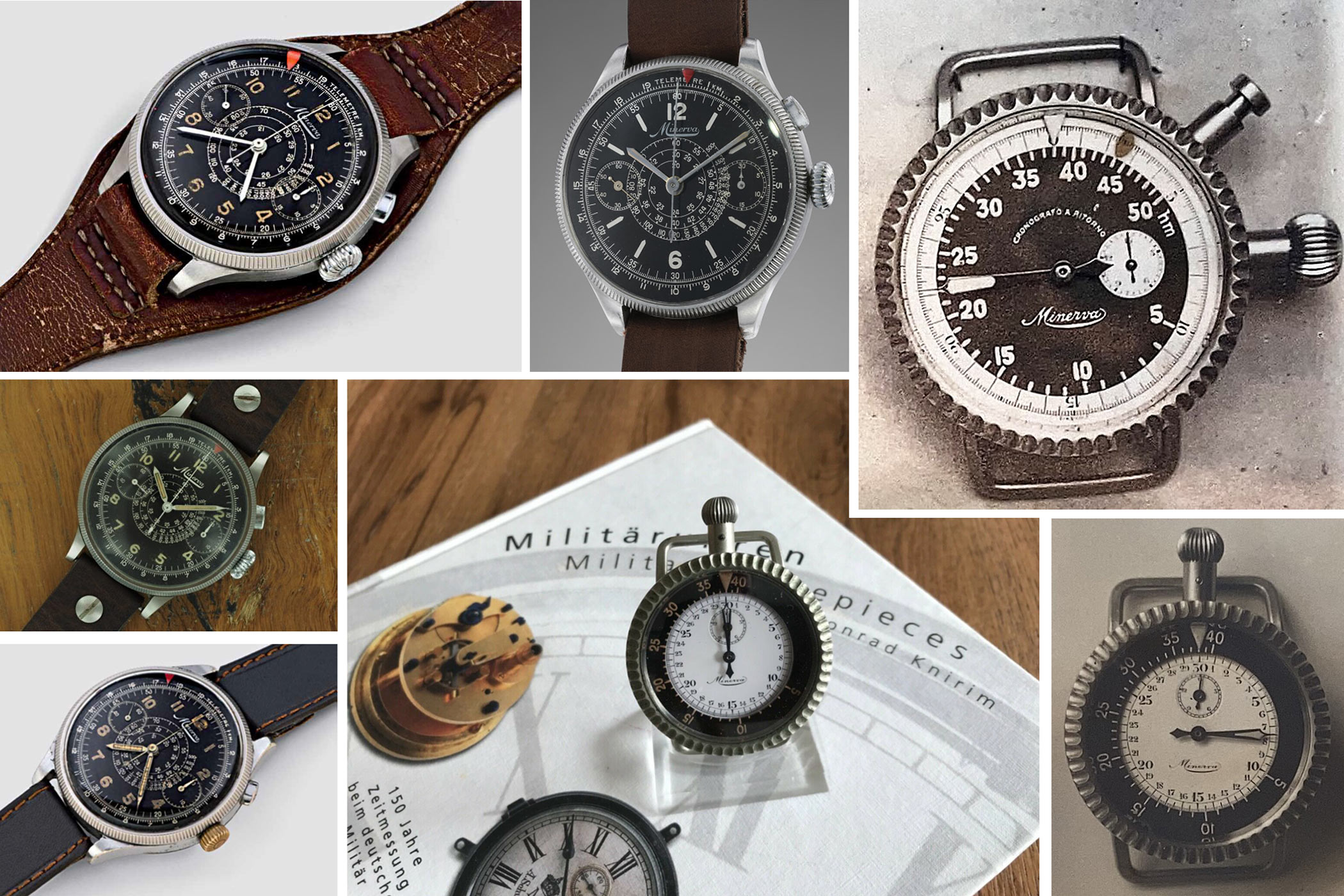
These characteristics – as well as numerous other functional elements – can be found in the new 1858 Minerva Monopusher Chronograph Red Arrow LE88. The bezel attached to the 42 mm case, for example, can be rotated in both directions. What’s more, depending on how the red arrow is aligned with the aid of the bezel, the wearer can read the elapsed time or a countdown can be set up, elapsing as soon as the minute hand reaches the arrow mark.
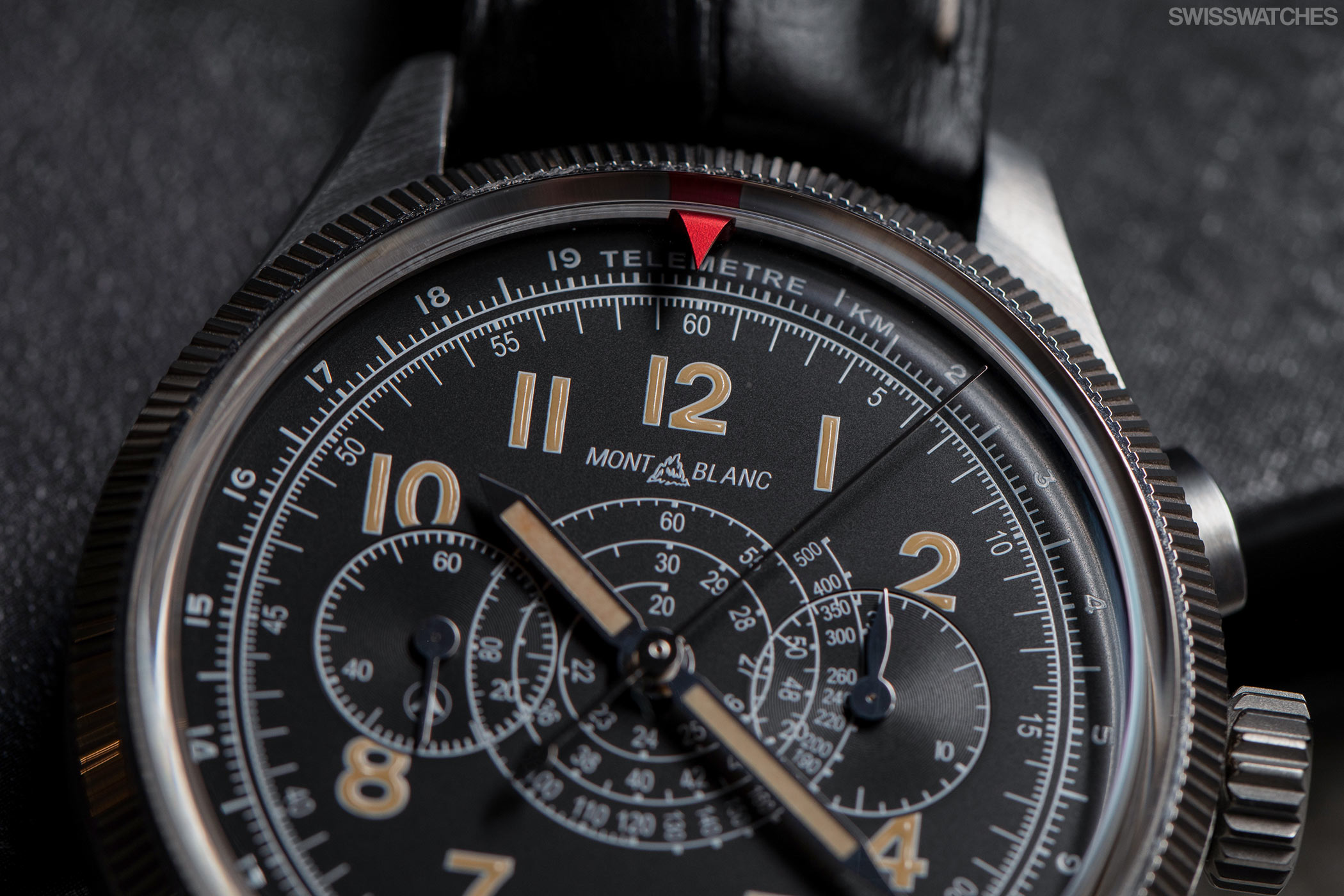
All of these pragmatic functions are spurred into action by the pusher that sits at two o’clock. The fact that the arrow is in bright red is a nod to Minerva, the Roman goddess of craftsmanship who always carried a spear with her. Furthermore, the stand-out colour naturally increases readability. Last but not least, the splash of colour is simply very nice to look at, especially in this colour combination. A. Lange & Söhne did a similar thing with the white-gold Richard Lange Jumping Seconds with a black dial, while the new titanium Blancpain Fifty Fathoms Bathyscaphe with a grey dial also uses a red accent for the seconds hand.
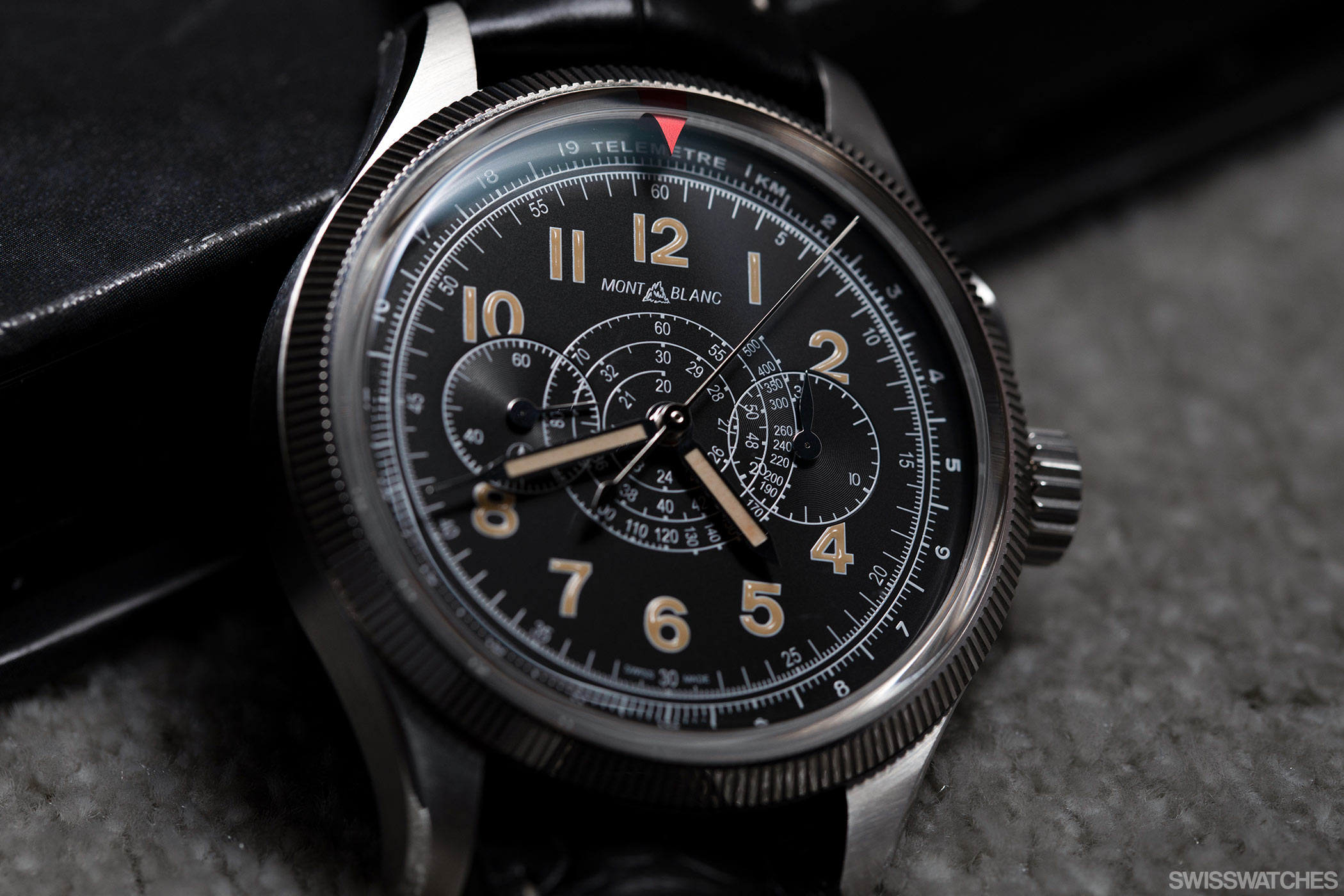
Not the first of its kind – but perhaps the most beautiful:
The story of Minerva, Montblanc, and the Monopusher
When it comes to the stainless-steel Montblanc Minerva watch, the combination of a deep black dial, white telemeter and tachymeter scales, Arabic numerals in beige Super-LumiNova coating, and red Minerva arrow is extremely successful. It could well be argued that this is the most beautiful monopusher chronograph to emerge from Montblanc’s recent history. In 2014, Montblanc already enjoyed great success with its pink-gold Heritage Spirit Pulsograph, limited to 90 pieces, with a white-silver dial. It was exactly the same in 2019 and 2020 with the Heritage Pulsograph, each limited to 100 pieces. Both were technically identical, using the hand-wound MR M13.21 calibre with a column wheel mechanism. With a diameter of 40 mm, the Heritage Pulsograph was somewhat more delicate, yet the choice of dial colours and metals were much more fashionable: first came a steel case accompanied by a salmon-coloured dial, then a rose-gold case plus a brown dial. The truly aesthetically impressive feature, however, was the calibre itself. This is also the case with the 1858 Minerva Monopusher Chronograph Red Arrow LE88’s movement, which can be admired through the sapphire crystal caseback.
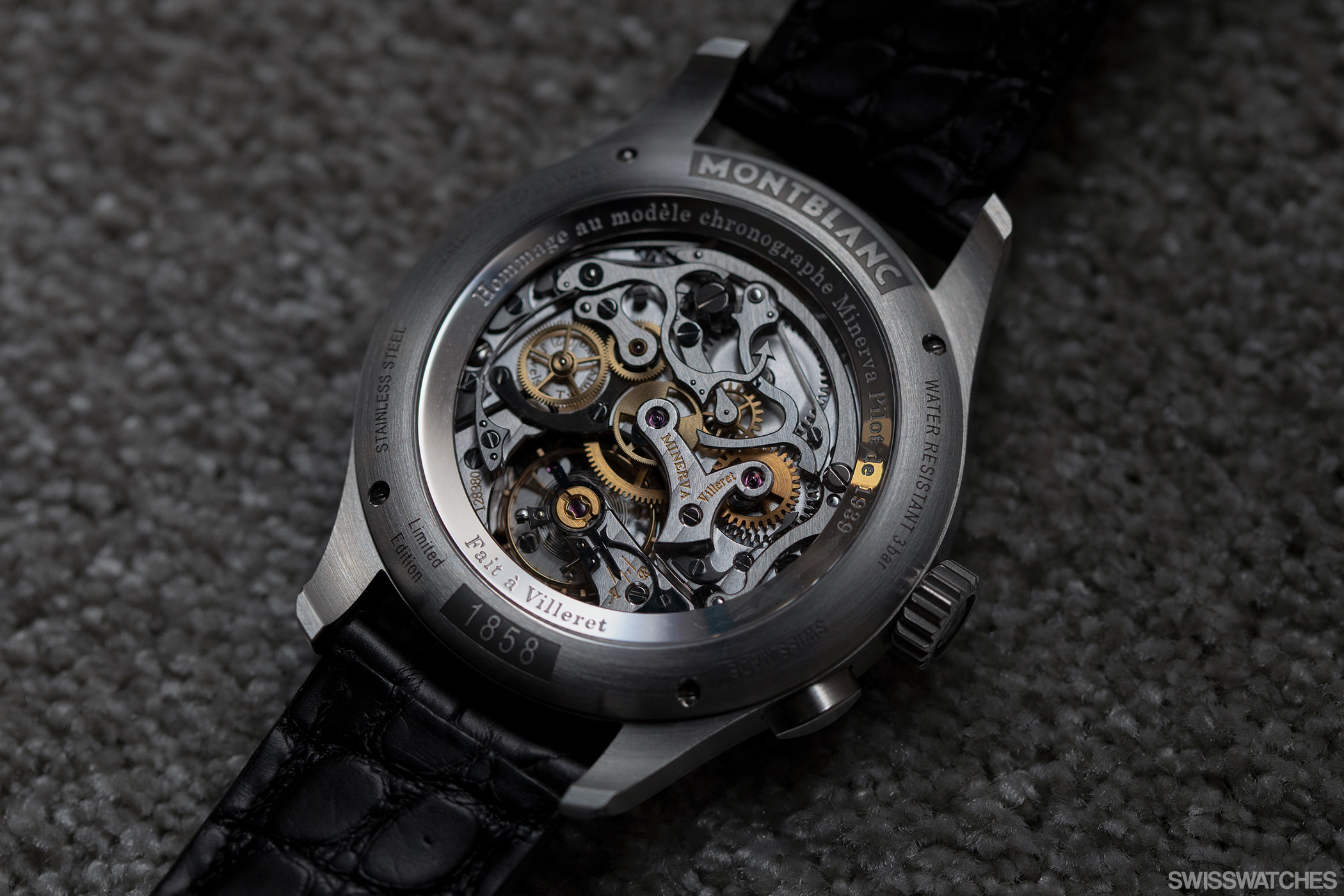
Also, the sibling monopusher chronographs, that are powered by the automatic movement MB 25.12, a modified version of the Sellita calibre SW510 became a favourite among Montblanc aficionados – whether housed in the steel and a salmon-coloured edition or in a bronze case with a black dial. Unlike the Pulsograph or the watch we are discussing here, the monopusher function on this watch was integrated into the crown. With prices in the mid four-digit range, they were far, far less expensive than limited horological showstoppers like the Red Arrow LE88 monopusher, which has retail price of 32,000 euros.
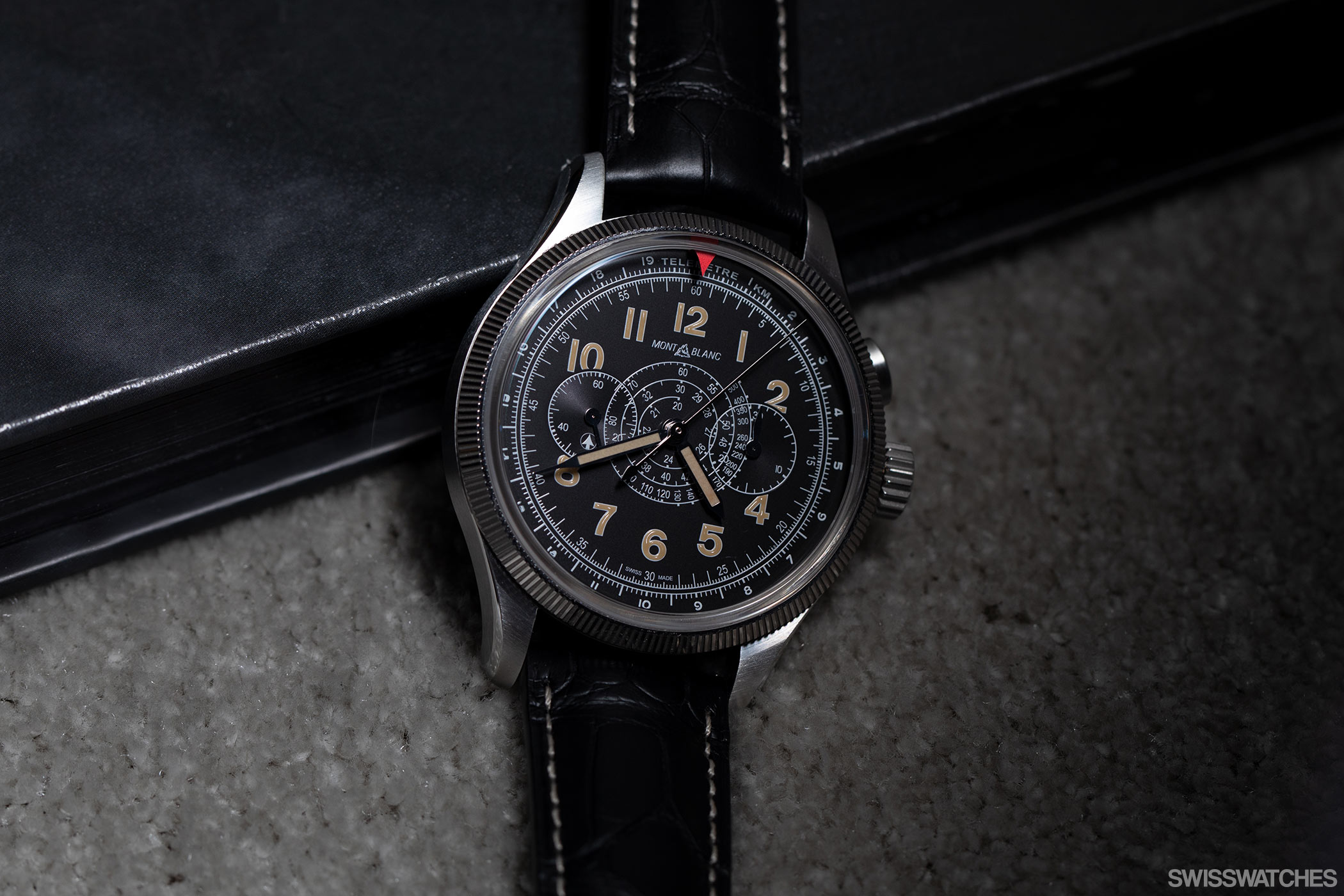
The Verdict:
A sign of things to come
Beyond colour combinations and different calibres, there is one more thing that stands out about the latest monopusher model. Although Montblanc does not refer to the historical models for this watch, it does assign the timepiece to the Heritage collection and even notes this on the dial, printing the name of the calibre there – as was the norm in the past. This may seem like an inconsequential reference at first glance, but it speaks for a self-confidence that has strengthened at the manufacture over the past few years. The reference to the past, including the great past of Minerva and its association with high quality watchmaking, is thus a tad less ubiquitous and striking, and the fact that decent calibres are used goes without saying. This also makes the Red Arrow particularly strong and timeless; a watch for the here and now, for hedonists who live in the moment yet appreciate the past nonetheless. After all, Montblanc no longer has anything or anyone to prove. This Red Arrow Limited Edition is thus almost typical of this well-deserved self-image: you place your bets on black. AND at the same time on red. Thus losing is almost impossible.
